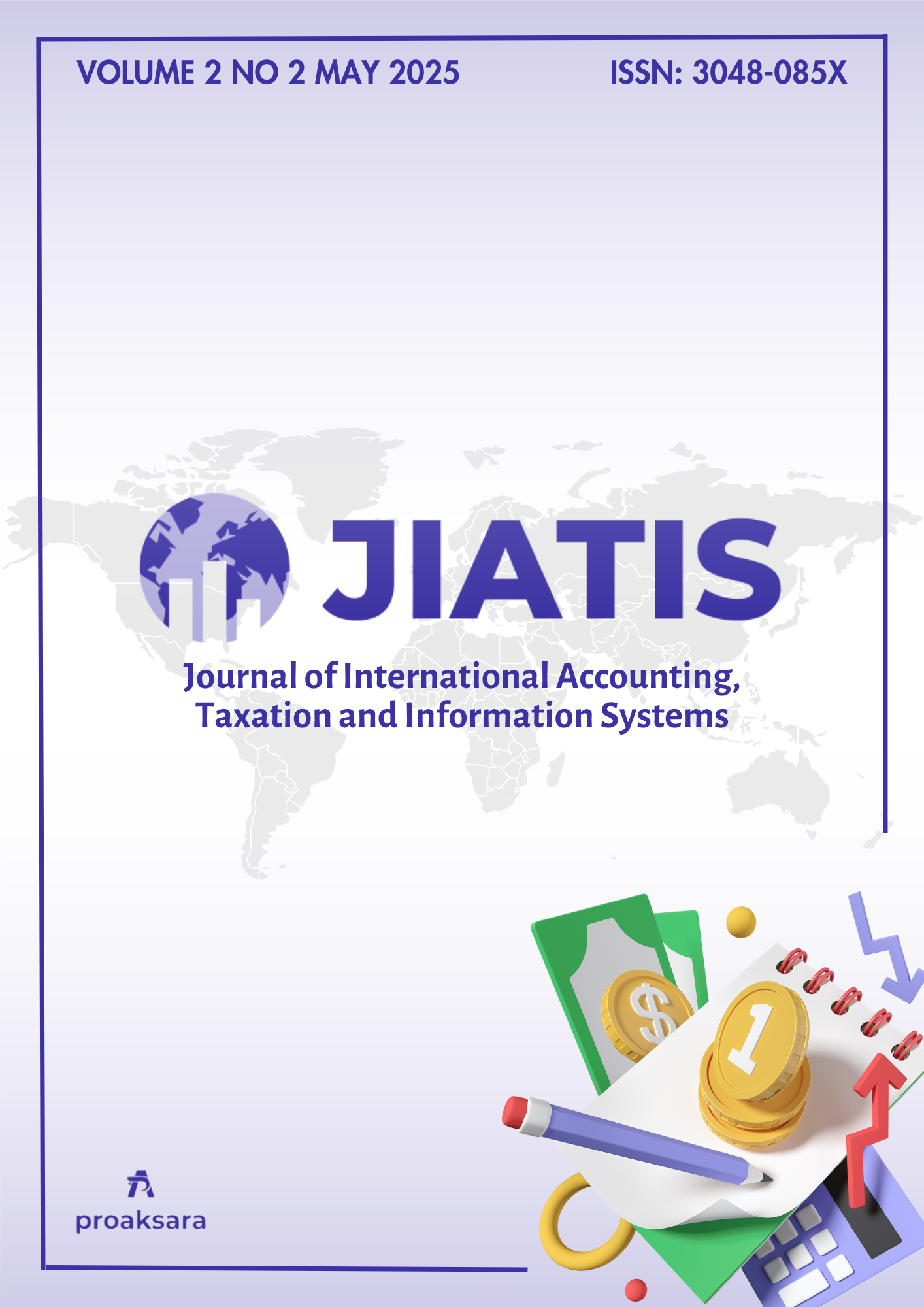Application of Classification Algorithm on Financial Data to Improve Financial Distress Prediction
Main Article Content
Dea Amellia Kartika Dewi*
Sriwidharmanely
The COVID-19 pandemic has intensified financial distress across various industries in Indonesia, especially in sectors like Accommodation and food & beverage, Other services, and Transportation & Warehousing. This situation highlights the urgent need for an accurate early warning system that can predict financial distress using reliable classification algorithms for business continuity. This research compares the Performance of the Support Vector Machine (SVM) and Decision Tree classification algorithms in predicting financial distress. The study utilizes secondary data from annual financial reports of companies listed on the Indonesia Stock Exchange (IDX) from 2019 to 2023. The research focuses on the Accommodation and food & beverage, Other services, and Transportation & Warehousing sectors. Data is collected using a purposive sampling method, ensuring balance across observations. A quantitative data analysis approach with an experimental design is applied to evaluate the classification performance. The results indicate that the Decision Tree algorithm outperforms SVM in all key Performance metrics: accuracy, precision, recall, and F1-score. The Decision Tree achieves perfect classification results, while SVM exhibits lower predictive ability, particularly in recall and F1-score. These findings suggest that the Decision Tree is more effective for financial distress prediction in this dataset. The study contributes to financial risk assessment by demonstrating the practical application of machine learning in financial classification tasks. Future research can enhance this model by incorporating larger datasets and developing application-based implementations to improve decision-making processes in corporate financial management.
Abedin, M. Z., Moon, M. H., Hassan, M. K., & Hajek, P. (2021). Deep learning-based exchange rate prediction during the COVID-19 pandemic. Annals of Operations Research. https://doi.org/10.1007/s10479-021-04420-6
Badan Pusat Statistik. (2020). Katalog: 3101028. Analisis Hasil Survei Dampak COVID-19 Terhadap Pelaku Usaha, vi+ 22 halaman.
Bahzad Taha Jijo, A. M. A. (2021). Classification Based on Decision Tree Algorithm for Machine Learning. Journal of Applied Science and Technology Trends, 2(01), 20–28. https://doi.org/10.38094/jastt20165
Bishop, C. M. (2006). Pattern Recognition and Machine Learning. In Journal of Machine and Computing (Vol. 4, Issue 1). https://doi.org/10.53759/7669/jmc202404020
Carrà, S. (2018). Entropy and Information. In Frontiers Collection: Vol. Part F929. https://doi.org/10.1007/978-3-319-95459-2_2
Charbuty, B., & Abdulazeez, A. (2021). Classification Based on Decision Tree Algorithm for Machine Learning. Journal of Applied Science and Technology Trends, 2(01), 20–28. https://doi.org/10.38094/jastt20165
Chen, S., Härdle, W. K., & Moro, R. A. (2011). Modeling default risk with support vector machines. Quantitative Finance, 11(1), 135–154. https://doi.org/10.1080/14697680903410015
Halina Frydman, Edward I. Altman, D.-L. K. (1985). Introducing Recursive Partitioning for Financial Classification: The Case of Financial Distress. The Journal of Finance, 40(1), 269–291. https://doi.org/10.1111/j.1540-6261.1985.tb04949.x
Kim, D. S., & Shin, S. (2021). The economic explainability of machine learning and standard econometric models-an application to the u.S. mortgage default risk. International Journal of Strategic Property Management, 25(5), 396–412. https://doi.org/10.3846/ijspm.2021.15129
Kim, S. Y., & Upneja, A. (2014). Predicting restaurant financial distress using decision tree and AdaBoosted decision tree models. Economic Modelling, 36, 354–362. https://doi.org/10.1016/j.econmod.2013.10.005
Piatt, H. D., & Piatt, M. B. (2002). Predicting corporate financial distress: Reflections on choice-based sample bias. Journal of Economics and Finance, 26(2), 184–199. https://doi.org/10.1007/bf02755985
Powers, D. M. W. (2020). Evaluation: from precision, recall and F-measure to ROC, informedness, markedness and correlation. May.
Sheldon M. Ross. (2010). Introduction to Probability Models. In Journal of the American Statistical Association (Vol. 93, Issue 441). https://doi.org/10.2307/2669658
Tran, K. L., Le, H. A., Nguyen, T. H., & Nguyen, D. T. (2022). Explainable Machine Learning for Financial Distress Prediction: Evidence from Vietnam. Data, 7(11). https://doi.org/10.3390/data7110160
Wang, G., Ma, J., Chen, G., & Yang, Y. (2020). Financial distress prediction: Regularized sparse-based Random Subspace with ER aggregation rule incorporating textual disclosures. Applied Soft Computing Journal, 90, 106152. https://doi.org/10.1016/j.asoc.2020.106152
















